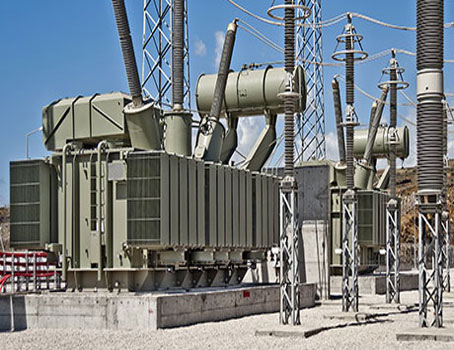Energy Management
By R.W. Hurst, President, The Electricity Forum

Download Our OSHA 4474 Fact Sheet – Establishing Boundaries Around Arc Flash Hazards

- Understand the difference between arc flash and electric shock boundaries
- Learn who may cross each boundary and under what conditions
- Apply voltage-based rules for safer approach distances
Energy management enhances power systems via smart grid controls, demand response, load forecasting, SCADA, and IoT sensors to improve energy efficiency, peak shaving, power quality, and renewable integration across industrial and utility operations.
What Is Energy Management?
Energy management is the control of electrical loads and assets to optimize efficiency, reliability and cost.
✅ Predictive load forecasting and peak shaving strategies
✅ SCADA/EMS integration with IoT sensors and analytics
✅ Demand response, power quality, and DER coordination
Energy management (EM) is a crucial practice today, as it helps businesses and individuals reduce their carbon footprint, save money, and contribute to a more sustainable future. By incorporating key elements such as efficiency, demand response, building automation, audits, smart grid technology, HVAC optimization, conservation, renewable energy, monitoring, and analytics, a comprehensive EM program can lead to significant savings and environmental benefits. As the world continues to face the challenges of climate change and dwindling resources, EM will remain an indispensable tool for creating a more sustainable and efficient future. For organizations starting out, an energy management program can provide a structured roadmap for setting goals and tracking performance.
Energy management is crucial for several reasons. First, it helps reduce carbon emissions and the overall environmental impact of energy use. Second, it saves money by lowering costs and making facilities more energy efficient. Third, EM practices contribute to businesses and organizations' long-term sustainability and competitiveness. Modern energy management systems offer centralized dashboards and automated alerts that help sustain these gains over time.
Building automation is one of the primary ways energy management systems improve efficiency in buildings. These systems utilize sophisticated technology to control and optimize energy use in various systems, such as heating, ventilation, air conditioning (HVAC), lighting, and security. By automating these systems, buildings can operate more efficiently and effectively, reducing waste and saving on costs. For broader context, guides on building automation fundamentals can help teams understand integration points with HVAC and lighting controls.
Electricity Today T&D Magazine Subscribe for FREE

- Timely insights from industry experts
- Practical solutions T&D engineers
- Free access to every issue
Energy management in industrial facilities requires a combination of best practices, including implementing EM systems, regular audits, and data analytics. By monitoring and analyzing data, asset managers can identify areas of inefficiency, implement targeted improvements, and track the success of their energy management strategies. As operations mature, adopting advanced energy management practices can unify analytics, forecasting, and optimization across multiple facilities.
Renewable energy sources, such as solar, wind, and geothermal, can be integrated into energy management systems to improve sustainability further and reduce reliance on fossil fuels. For example, a facility may use solar panels to generate electricity during peak sunlight hours, reducing the need for grid-supplied energy and reduce energy costs. Additionally, renewable energy can be used with energy storage systems to provide backup power during high demand or grid outages. Well-designed building energy management systems coordinate on-site renewables with storage and loads to maximize self-consumption and resilience.
An effective EM strategy comprises several key components, including a thorough understanding of use, a commitment to continuous improvement, and a focus on energy-efficient technologies and practices. For example, businesses can implement energy-saving measures, such as retrofitting lighting systems with energy-efficient LEDs, upgrading HVAC systems to more efficient models, and improving building insulation to minimize heat loss. Upgraded energy management controls enable granular scheduling, sensor-driven setpoints, and measurement and verification to prove savings.
Smart grids and demand response play a critical role in EM by enabling a more flexible and responsive approach. Smart grids use advanced technology and real-time data to optimize electricity generation, distribution, and energy consumption. On the other hand, demand response programs incentivize consumers to reduce or shift their energy use during periods of high demand, helping to balance the grid and lower overall costs. When paired with a capable building automation system, demand response signals can trigger coordinated load shifts with minimal occupant disruption.
Audits are an essential part of energy management, as they provide a comprehensive assessment of a building's performance and identify opportunities for improvement. During an audit, an EM professional evaluates the consumption of a facility, typically an office building or industrial plant, and recommends cost-effective measures to reduce use and costs. These recommendations may include upgrading equipment, implementing energy-efficient practices, and addressing inefficiencies in the building's design or operations.








